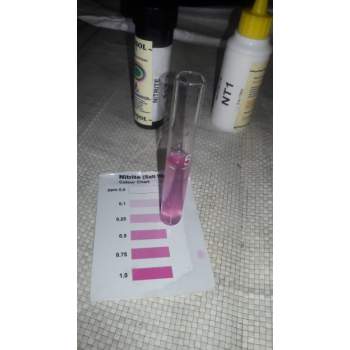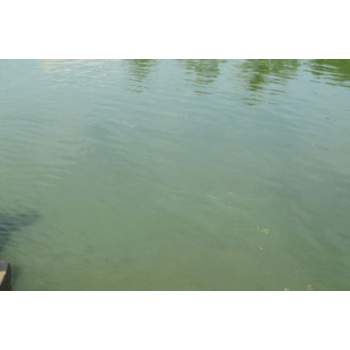
Ammonia is the major toxic component produced continuously by shrimps during culture. It can also accumulate in the water due to the decomposition of organic matter as excess feed, faeces, dead shrimp and dead algae. Ammonia is the main end product of protein catabolism in crustaceans and can account for 60–70% of nitrogen excretion with only small amounts of amino acids, urea and uric acid. Of the nitrogenous compounds, ammonia is the most toxic with nitrite and nitrate being less toxic to shrimp.
Ammonia is the primary excretion product of protein metabolism. In water, ammonia is present in both ionized (NH4+) and un-ionized (NH3) state, with NH3 as the toxic form due to its ability to diffuse across cell membranes. Unionized ammonia is highly toxic to the shrimp and must be removed from the system. The relative proportions of NH3 and NH4+ depend on pH, temperature and to a lesser extent on salinity. Ammonia is nitrogenous waste produced from feed input and microbial decomposition of organic matter in water columns. Shrimp feed is usually high in nitrogen.
In vannamei culture, sometimes only 22 percent of the Nitrogen input is converted to harvested shrimp. 57 percent is discharged into the environment and 14 percent remains in the sediment.
Ammonia Toxicity in Vannamei
Ways to prevent ammonia build-up
If you want to solve the problem of Ammonia, you should do the following:

Water Quality is vital for a successful crop. Availability of good quality water is required quantities is one of the most important prerequisites for sustainable aquaculture. While locating the farm site, careful study should be made on the source of water, a quantity of water available during the different seasons, and the quality of water. All instructions and precautions should be followed strictly to get the best out of your farm.
Some Key Points to follow are,
Optimum water quality parameters for Vannamei
Maintenance of water quality within the optimal levels during the culture is very essential for ensuring good growth and survival of shrimps are presented below.
|
Water Parameters |
Optimal Range |
|
Dissolved Oxygen |
>5 ppm |
|
Temperature |
28-310C |
|
pH |
7.5 – 8.5 |
|
Transparency (Secchi disc) |
35 – 45 cm |
|
Salinity |
10-25 ppt |
|
Total Alkalinity as CaCO3 |
100-160 ppm |
|
Total Hardness as CaCO3 |
>2000 ppm |
|
Calcium/Magnesium Ions Ratio |
1:3 |
|
Total Ammonia (NH4+) |
< 1.0 ppm |
|
Unionized Ammonia (NH3) |
< 0.1 ppm |
|
Nitrite |
< 0.2 ppm |
|
Hydrogen Sulphide (H2S) |
< 0.1 ppm |